Type and hit enter
Type and hit enter
Traces of the primeval life in the prolific Mediterranean garden
The Hollywood director Alfred Hitchcock once said: “the drama is life with the dull bits cut out”. It might be the case that he said those words while sitting on the terrace of the Zagreb Hotel in Zadar, enthusiastically puffing the smoke of his favourite Habanos cigars up in the air and looking at the islands of the Zadar Archipelago over which a sunset drama was taking place. The sunset was special, colourful and theatrical, embraced by this endless archipelago in each and every of its coves, inlets and bays. If the nearby islands belonging to Kornati archipelago would be added to the islands of Rava, Iž, Sestrunj, Dugi Otok, Ugljan and Pašman, Olib, Ist, Molat, Premuda, Silba and other islands of Zadar archipelago – a group of 17 larger and 11 smaller islands, there would be more than a hundred of them.
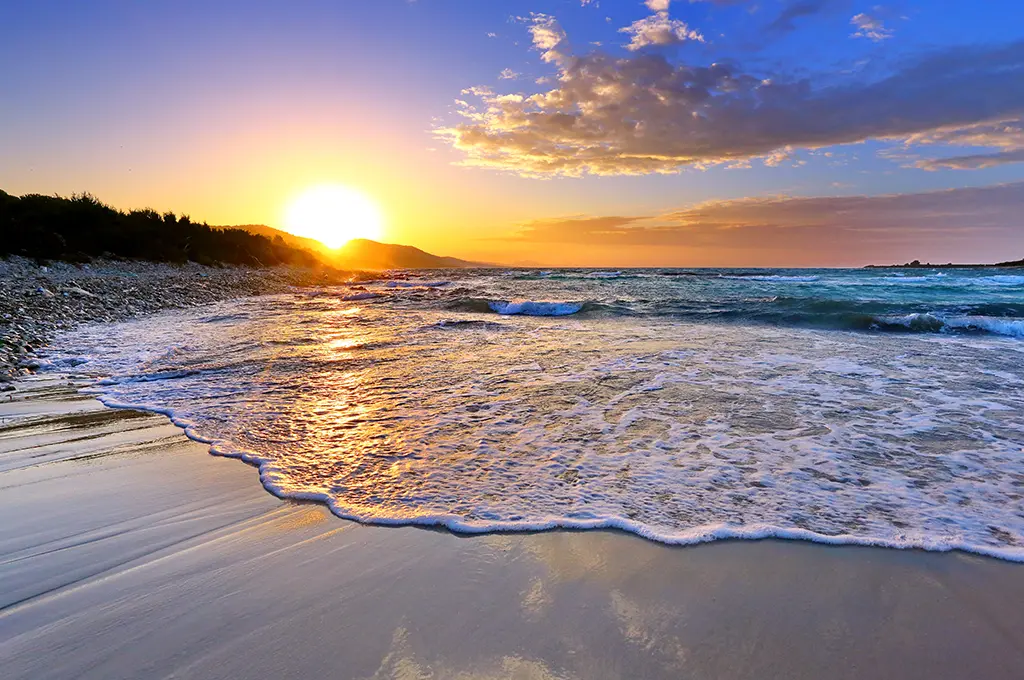
The islands of the Zadar archipelago appear seemingly the same. In the scenery comprising rocky terrain, karst, dry stone walls and olive groves, they are comfortingly covered by the beneficial primeval Mediterranean vegetation. Oranges, tangerines and lemons on the island of Rava add a special colour to that ambience. Shrimps, sardines, sea bream, squid, anchovies and octopuses are also part of this abundance. The lonely islands are surrounded by the sea that gave them nothing but beauty. The endless tame coves, lovely inlets and sandy beaches that can be found on the islands of the Zadar archipelago simply lure modern travellers like nymphs used to do it in myths. Dugi Otok is famous for Sakarun, a beach whose white sand, clean sea and pine forests have been inspiring people for decades. The islands in the Zadar archipelago, laid like a dry stone wall opposite to the mainland, have always been like garden oases decorated with prolific Mediterranean vegetation, ancient olive groves and dry stone walls. The island of Ugljan and its hamlets are an exquisite example of the preserved heritage.
The material remains of human existence in the wider Zadar region and on the islands originate as far back as the Old Stone Age. In an 11,000-year-old layer on Dugi Otok, the oldest Dalmatian named Šime was found, and then the Palaeolithic Venus named Lili. The findings from the later periods provide evidence of the continuity of life in this area. From the Iron Age Liburnians, the Roman Empire and the medieval Glagolitic epigraphy depicting the religious life of the island people, up until today, the islands of the Zadar archipelago have not only been safe harbours or oases, but also centres of the exuberant life. The adventure that started at least 11,000 years ago, has never ended. Thus, the Palaeolithic and Mesolithic boduli have been replaced by modern European trail or triathlon runners, so the spring and autumn weekends in May and September are reserved for adrenaline and the adventure of discovering the beauties of these islands.
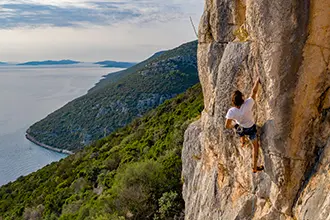
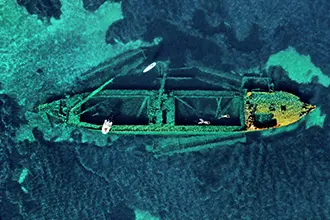

The Zadar region is one of the most attractive in the Mediterranean because of the wild beauty of nature parks and national parks that surround it. Therefore, the participation in a kayak race, a swimming marathon, or trekking through the olive groves of the island of Ugljan and adrenaline-pumping Škraping on the island of Pašman represent a real challenge for all inspired adventurers. Tourists especially love islands because it seems that life has been preserved on theirs tame paths and in all forms – in the traditional August celebration of Our Lady of the Snows (Gospa od Sniga) in Kukljica or making of the traditional wooden sieve called siknjica, used to drain and dry the fish and store fruits and vegetables. A part of this ethnographic wealth can be found in the regional ethnographic and cultural-historical collection of the islands Veli and Mali Iž. Zadar, as the regional centre that has always been connected with the islands by the shipping lanes, is situated in the centre of this primeval beauty and untouched landscape. If you are looking in the direction north, your view will reach the mythical mountain of Velebit, while on the opposite southern side the islands will flaunt in the pearly splendour of the Adriatic sea.
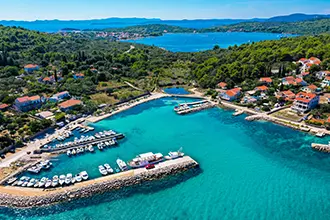
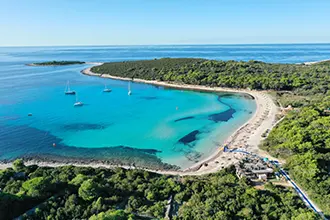
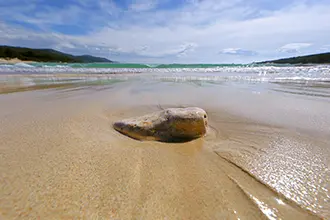
The island of Olib situated on the border between Dalmatia and Kvarner was noticed even by the ancient geographer Strabo. It is known for sheep farming, olive growing, oak trees and the fact that there are no cars on the island. There is only one inhabited village on the island of Silba and it is known for its ship owners, sailors and artists. The island of Premuda is situated to the west of Silba and it is particularly attractive to sailors and divers who like to explore its underwater system of caves. It has been named the Cathedral because of its enchanting beauty. About a hundred years ago, the island of Ist had the largest navy in Dalmatia, and today it is known for its basketball tournament and swimming marathon. Ist is the birthplace of Dina Levačić, the first Croatian woman to swim across the English Channel. Sestrunj is one of the smaller islands in the Zadar archipelago surrounded by the Sestrunj Channel, Rivanj Channel and Srednji Channel. Still, it offers a magnificent view of a part of the Zadar coast and Zadar archipelago. Like the other islands of the Zadar archipelago, Sestrunj has been inhabited since the prehistoric period. Separated by Srednji Channel on the north and Iž Channel on the south side, the island of Iž is situated in the middle between the islands of Dugi Otok and Ugljan. It is also surrounded by ten islets. During the Middle Ages, it belonged to Zadar gentry. Today it is famous for the traditional Iž Festival (Iška fešta), when the king of Iž is elected for a year. The island of Molat is situated in the northern part of the Zadar archipelago, between the Vir Sea and the open sea. It has an indented and varied coastline with a large natural harbour and the village of Zapuntel. Dugi Otok is one of the outer islands of the Zadar archipelago together with the islands of Molat, Ist, Škarda and Premuda. There are as many as 11 villages and hamlets on Dugi Otok and the island is full of natural beauty. The Telašćica Nature Park is located on the southern part of the island, Velo and Malo Lake are located near Žman. Especially attractive are the coves called Solinšćica and Sakarun. Dugi Otok is also known for the Veli Rat lighthouse, the Church of St. Pelegrin, the cave called Strašna peć (The Awsome Stove) situated at the altitude of 70 meters, the sea cave called Zmajevo oko (The Dragon’s Eye) and musical heritage called Tovareća mužika (the Donkey Music) originating from Sali. Rivanj is a small island of famous sailors and it is located between Ugljan and Sestrunj. It is a favourite destination of sports fishermen because the surrounding waters are rich with fish. According to legend, the village of Rivanj was founded by the people of Ugljan in the 16th century. Ugljan is one of the larger Croatian islands. It is separated from the mainland by the Zadar Channel, but connected with the island of Pašman by a bridge. Ugljan is abundant with points of interest, e.g. the Franciscan monastery of St. Paul the First Hermit situated on the islet of Galevac and the baroque villa of the Lantana family. It is also known for tuna fishing and drystone walls.
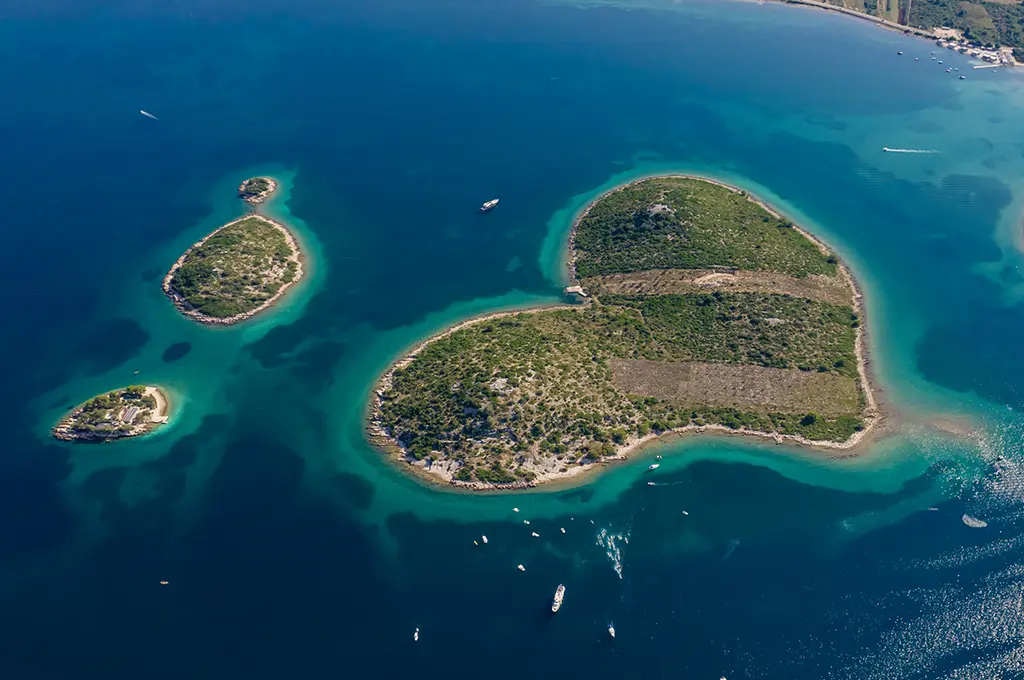
There are 11 villages and hamlets on the island of Pašman and they are all located on the north-eastern side of the island, whereas the southern side of the island has been known for the developed wilderness tourism. The island is interwoven with numerous attractive cycling and hiking routes offering amazing views of the Kornati archipelago, the Zadar archipelago, and the most famous island in the world, Galešnjak – the heart-shaped island of love, which was included in the American “Forbes” magazine as one of the most romantic destinations in the world. Pašman is full of cultural monuments, sacral and rural objects that make up the priceless wealth of this island and serve as a basis for development of tourism. One of the most important cultural monuments here is the Monastery of St. Cosmas and Damian on the Ćokovac Hill, which is the only active male monastery in the Republic of Croatia and which has been the centre of study of the Glagolitic alphabet and nursery of literacy and culture for centuries. In the village of Kraj there is a Franciscan monastery of St. Domnius originating from the 14th century, which also houses a museum with exhibits related to the rich history of the island. The island is abundant with beautiful sandy beaches, untouched coves and unique grikes. Its shores are lapped by the crystal clear sea, since the sea currents in this area change direction every 6 hours, which makes the sea in this area the cleanest in the Adriatic.
Pašman has always been known for fishing, agriculture, tourism and traditional island architecture, especially the construction of ancient drystone walls (suhozid and mocira) and drystone huts (bunja). This destination is also known for its outdoor activities, and one of the most famous events taking place on the island is Škraping, the international trekking and trail race, which gathers over 1000 runners from all over the world. In the past couple of years, a recreational race and a walk to Veliki Bokolj in Dobropoljana called Đarada has also gained popularity. Veliki Bokolj is the highest peak on the island of Pašman, which is also a lookout offering one of the most beautiful vistas. Nature lovers can also enjoy the amazing view from Straža lookout in Tkon.
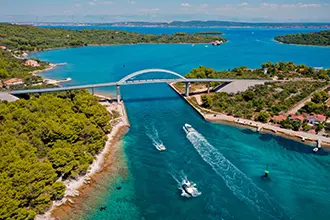
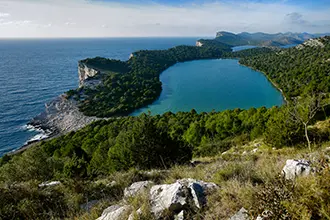
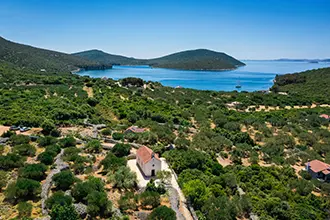
The island of Rava, with its two villages – Vela and Mala Rava, is situated in the middle between the Iž Channel and Rava Channel. It is known for its olives, oranges, blueberries, blackberries, peaches and plums. Still, it is best known as the Centre of the World, since according to a legend and belief of Rava inhabitants, the island is located in the very centre from which point the world is set in motion by underground wheels. The islands of the Zadar archipelago are imbued with is imbued with the traces of the primeval life in the prolific Mediterranean garden.
Sometime in the sunset of the Bronze Age, in the age of heroes, the legendary hero Jason, accompanied by his fellows Argonauts and sailing among the islands of the Zadar Channel, reached the coast, whose shallows in the narrowest part of the bay represented safety for travellers tired of their adventures. According to the legend, to express his gratitude to the gods of wind, sea and fate, the immortal Jason founded the city of Zadar in that very place, or in a similar place in the immediate vicinity, which is today’s bay of Jazine. It was near the end of the famous voyage of the Argonauts and their search for the Golden Fleece. In those ancient times, in the places where Jason sought wealth and fame, the fleece used to be submerged in a stream to collect gold particles or gold dust, and then dried. The inhabitants of Zadar archipelago, especially the people of Olib, still dry fleece in front of their doors of the island’s barns during the grape harvest, when they traditionally prepare mutton dishes. There are also other dishes that are prepared in specific time of year that echo those long-gone myths. “Pivac pod pekom” (rooster baked under a dome), is a dish traditionally prepared in July or early August to symbolise the full power of the Sun, whereas the lamb is traditionally prepared in the spring, when nature awakens, to symbolise the Sun that is gaining its power, both in the sky and on the Earth.
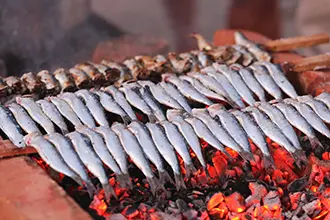
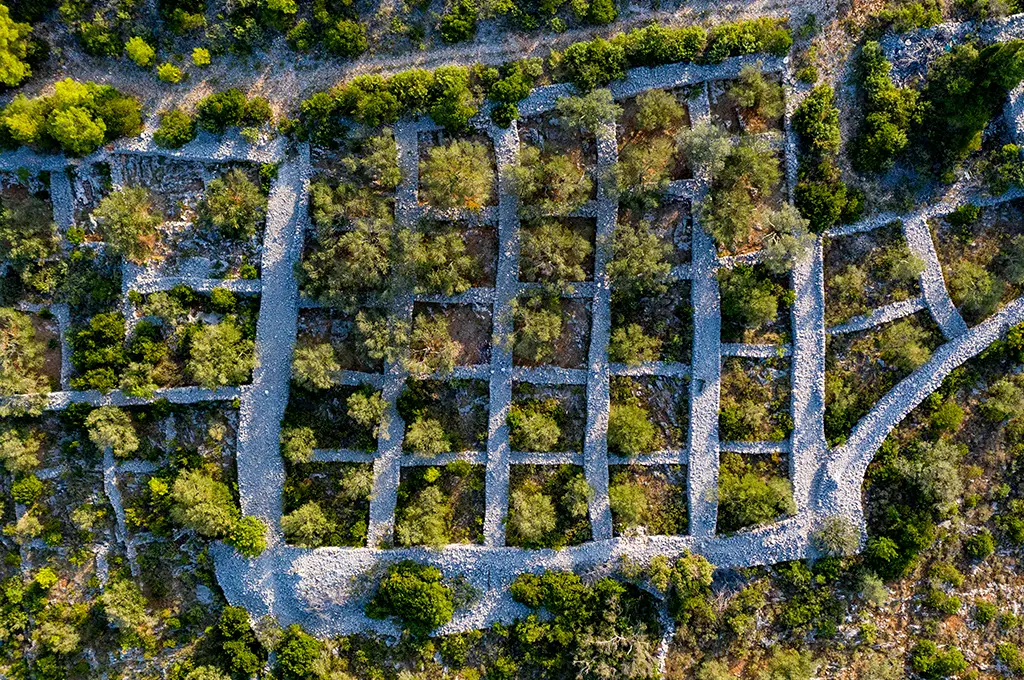
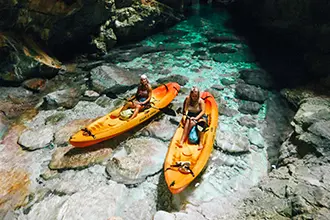
Adding {{itemName}} to cart
Added {{itemName}} to cart